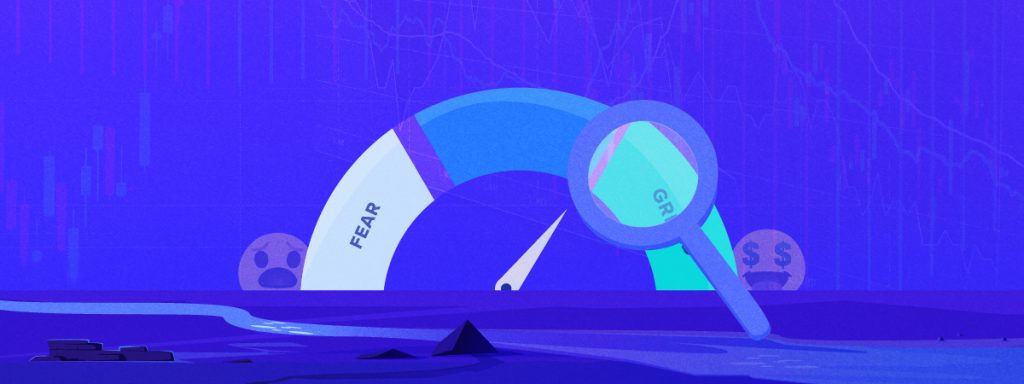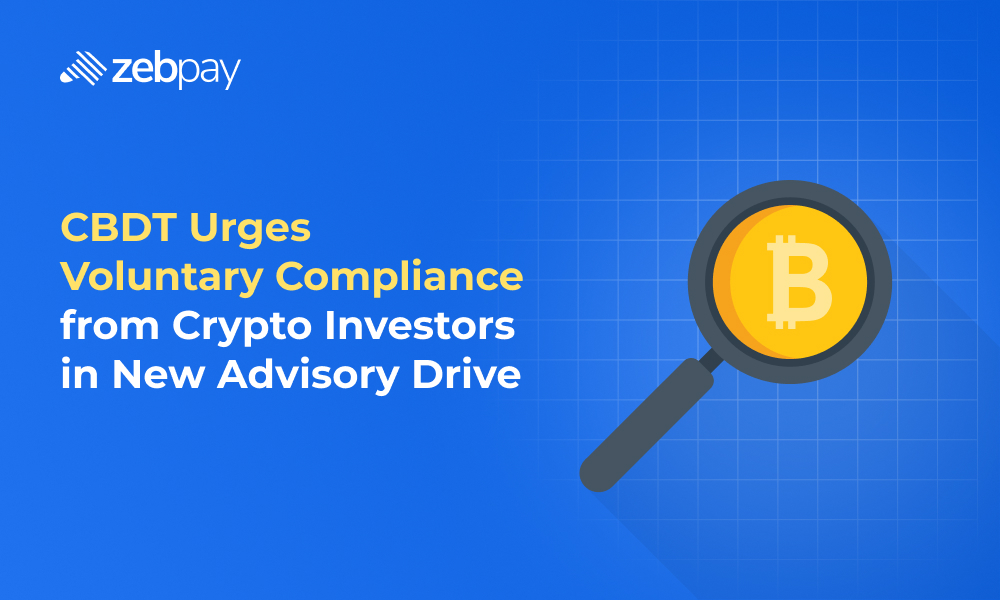Learning to be a crypto trader can be daunting. From fundamental analysis to charts and countless metrics, it can easily become overwhelming to analyze a single token. Adding market sentiment to the mix only makes the process even harder. This is where the crypto fear and green index come in. It simplifies the analysis of market sentiment and makes trading more accessible. But what is the fear and greed index?
Defining the Fear and Greed Index
The Fear and Greed Index is essentially a measure of investor sentiment. It is a popular tool used to gauge the emotions and attitudes of traders towards buying and selling assets. The index is based on indicators like market volatility, price momentum and investor demand for safe-haven assets.
History and Evolution of the Fear and Greed Index
The Fear and Greed Index was created by CNNMoney in 2011 as a way to measure the emotions and attitudes of investors towards the stock market. It is based on a scale of 0 to 100, where high values indicate confidence in the market. On the other hand, lower values indicate fear and uncertainty in market conditions.
This index has also evolved to include additional indicators, such as the VIX (Volatility Index) and the Put/Call Ratio. They are typically used to provide more nuanced insights into market sentiment.
Read more: Crypto Vs Stocks
Importance of the Fear and Greed Index in Financial Markets
Over the years, the Fear and Greed Index has become a popular tool for investors and traders. It provides a simple way to gauge the sentiment of the market. The index assists investors to navigate the often unpredictable world of the financial markets by assisting investment decisions. It also continuously evolves and adapts to market conditions, which helps you stay ahead of the curve.
Understanding the Fear and Greed Index Scale: A Deep Dive
Components of the Fear and Greed Index
While the specific components of the index may vary depending on the source, some of the most common indicators include:
- Stock Price Momentum: This indicator looks at the performance of asset indices over the past 125 days. This is then compared to its performance over the past 250 days. If the current price is higher than the price 125 days ago, it is considered positive momentum.
- Market Volatility: The VIX (Volatility Index) is a measure of how much the market is expected to fluctuate over the next 30 days. A high VIX indicates that investors are expecting significant price swings shortly.
- Safe Haven Demand: This indicator looks at the demand for safe-haven assets such as gold and bonds. If investors are flocking to these assets, it suggests that they are feeling risk-averse.
- Put/Call Ratio: This ratio measures the number of put options compared to call options. A high ratio indicates that investors are bearish, while a low ratio suggests that investors are bullish.
- Junk Bond Demand: This indicator looks at the demand for high-yield (junk) bonds, which are considered riskier than investment-grade bonds. If investors are buying more junk bonds, it suggests that they are willing to take on more risk in search of higher returns.
Read more: How to do Fundamental Analysis In Crypto
Interpretation of the Fear and Greed Index Scale
The Fear and Greed Index is typically measured on a scale of 0 to 100. Higher values indicate higher levels of investor confidence (greed) and lower values indicate higher levels of fear and uncertainty in the market.
For example, a reading of 0 on the index suggests that investors are panicking and selling off assets in large numbers. A reading of 100, on the other hand, suggests investors are overly optimistic and may be taking on too much risk.
Understanding the Range of the Fear and Greed Scale
The interpretation of the scale can vary depending on the individual investor and the specific market conditions. Some investors may be more risk-averse and may consider a reading of 60 to be excessively greedy. Meanwhile, others may be more comfortable taking on risk and see a reading of 40 as a buying opportunity. Ultimately, the Fear and Greed Index is just one tool among many for investors to use.
Using the Fear and Greed Index for Trading: Tips and Strategies
How to Use the Fear and Greed Index for Trading Decisions?
The fear and greed index should be combined with your investment strategy and risk appetite. Generally, a value of 50 is considered neutral, with no fear or greed in the market. But some investors may consider this value low, especially if it is a high-growth asset.
Thus, it is essential that your analysis is comprehensive and covers how different types of tokens may influence the index.
Combining the Fear and greed Index with Other Technical Analysis Tools
There are a few methods you can use to better apply the fear and greed index. For example, assume you use a moving average crossover strategy. The fear and greed index can then be used as confirmation. If both indicators arrive at the same conclusion, it will be easier to follow the inference.
It can also be combined with oscillators like the Relative Strength Index. If the index shows high greed and RSI indicates the market is overbought, then the market may soon undergo a correction.
Strategies for Timing Market Entries and Exits Using the Fear and Greed Index
The Fear and Greed Index can also be used to time entries and exits from positions. For example, if the index is showing high levels of greed, it may suggest that the market is due for a pullback. This can be a good time to sell and take your profits. Conversely, if the index is showing high levels of fear, it suggests that the market is oversold and due for a bounce. This can be the perfect time to enter the market.
Crypto Fear and Greed Index: Insights and Analysis

How the Crypto Fear and Greed Index Differs from Traditional Markets?
Overall, the crypto fear and greed index is very similar to traditional markets. But there are some key differences. First and foremost, the crypto market is newer and more volatile. Thus, the data available to the index is substantially different from traditional markets.
Additionally, investors in the two markets do not act the same. Thus, the crypto fear and greed index uses new metrics like social media activity and google searches for calculations.
Read more: Crypto Trading Strategies
Analyzing the Crypto Fear and Greed Index Chart
While metrics and participants may be different, the analysis remains the same. Look out for extreme readings, as they suggest corrections and reversals are imminent. Additionally, if the index diverges from the actual price, there may be a mismatch between sentiment and market conditions.
Calculating the Fear and Greed Index: Methodology and Limitations
Methodology of Calculating the Fear and Greed Index
The goal of this index is to capture the market sentiment. As technology and financial markets evolve, so does investor sentiment. Today’s fear and greed indices use new methods like social media analysis, natural language processing and search engine results to form a complete picture of the market.
Criticisms and Limitations of the Fear and Greed Index
Despite its usefulness, there are some criticisms and limitations of the Crypto Fear and Greed Index:
- Subjectivity: The index is based on a combination of different indicators and metrics, some of which are subjective. For example, social media activity and Google searches may not always accurately reflect market sentiment.
- Lack of Transparency: The specific formula used to calculate the index may not be publicly available, making it difficult for investors to fully understand how the index is calculated.
- Volatility: The crypto market is known for its volatility, and sentiment can shift quickly and dramatically. This can make it challenging to accurately capture market sentiment at any given time.
Read more: Guide To Crypto Technical Analysis
Alternatives to the Fear and Greed Index in Market Analysis
There are several ways to incorporate alternative options in market analysis. First, you can use the fear and greed index among a basket of indicators. Comparing the indicators can help provide a complete picture of the market, instead of relying on a single source.
As an investor, you too can create an alternative to this index. Each individual has a different investment strategy. You can choose proxies for the market sentiment that best fits your style of investment.
Conclusion
Recap of the Crypto Fear and Greed Index and its Importance in crypto Investments
The Fear and Greed Index is a tool used to measure the emotions and attitudes of traders towards buying and selling assets, including crypto assets. It provides a simple way to gauge the sentiment of the market. It assists investors in navigating the often unpredictable world of the stock market by assisting investment decisions.
Key Takeaways and Next Steps for Incorporating the Index into Investment Strategies
The Fear and Greed Index is a useful tool for investors and traders as it simplifies the analysis of market sentiment and makes trading more accessible. The index should be adapted to an investor’s investment strategy and risk appetite. It can be combined with other technical analysis tools, such as moving averages and oscillators, for confirmation of trading decisions. Investors should also consider how different types of tokens may influence the index when analyzing it.
You can learn more about crypto trading and investing on ZebPay blogs. Trade confidently with ZebPay.
FAQs on What is Crypto Fear and Greed
How often is the Crypto Fear And Greed Index updated?
The Crypto Fear And Greed Index is updated on a daily basis. It provides investors with real-time insights into the sentiment prevailing in the crypto market.
How can investors use the Crypto Fear And Greed Index?
Investors can use the Crypto Fear And Greed Index as a tool to gauge market sentiment. By understanding the prevailing emotions, investors can make informed decisions about buying, selling, or holding their crypto assets.
Is the Crypto Fear And Greed Index a reliable indicator?
While the Crypto Fear And Greed Index provides valuable insights, it’s important to note that it’s just one tool among many. Investors should consider a range of indicators and perform thorough research before making investment decisions.
Can the Crypto Fear And Greed Index predict market movements?
The Crypto Fear And Greed Index is not designed to predict precise market movements. It provides a snapshot of sentiment and helps investors gauge the prevailing emotions in the market. It’s essential to use the index as part of a comprehensive analysis and not rely solely on it for investment decisions.
Are there any limitations to the Crypto Fear And Greed Index?
Like any market sentiment indicator, the Crypto Fear And Greed Index has limitations. It relies on various data points and algorithms, which may not always accurately reflect market sentiment. It’s important for investors to consider other factors and use their own judgment when making investment decisions.
Where can I find the Crypto Fear And Greed Index?
The Crypto Fear And Greed Index is widely available online. Several financial websites and crypto analysis platforms provide real-time updates of the index, allowing investors to access it easily.
What does a high Fear and Greed Index indicate?
A high Fear and Greed Index indicates that investors are predominantly driven by greed and exhibit an optimistic sentiment towards the market. It suggests that there may be an increased appetite for risk-taking and a belief that prices will continue to rise in the near term.
What does a low Fear and Greed Index indicate?
A low fear and greed index suggests a cautious sentiment among market participants, potentially signaling a lack of buying pressure. Investors may be exercising restraint and seeking a more balanced approach to their crypto investments during such periods.






